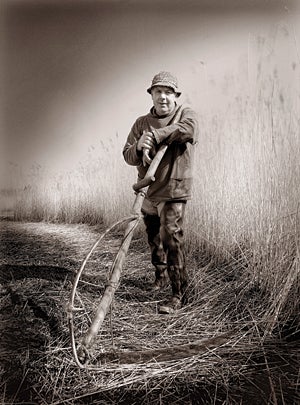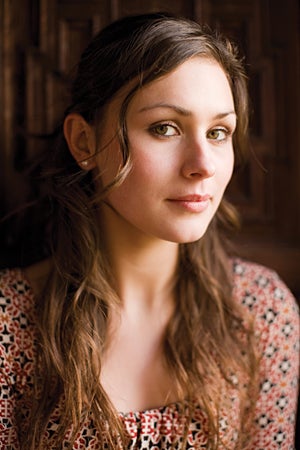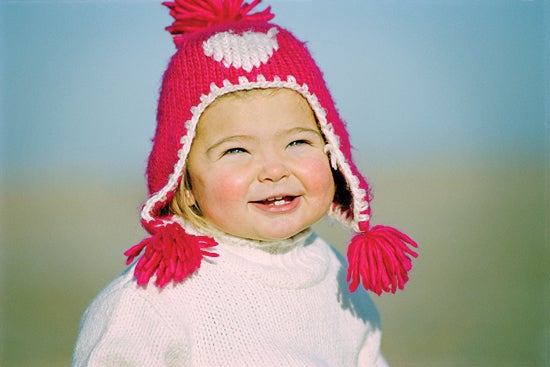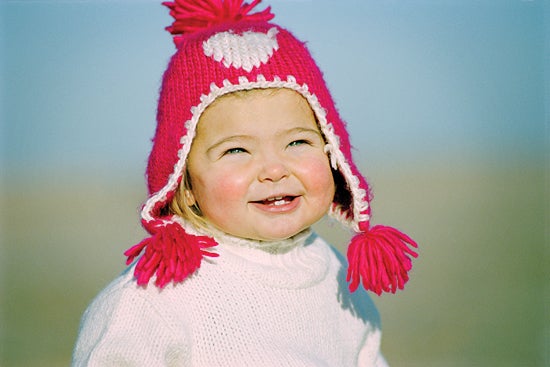Shooting portraits – one of those photographic techniques that sounds a lot easier than it is. It’s not so much a case of point and shoot, as your subject needs to feel comfortable to have their photo taken. To take the best portraits there are a variety of techniques to consider, a combination of which will assist in making your best possible photographs. Wide apertures, standard lenses, soft lighting and available light all have different impact to the way you can shoot portraits, so here’s how to harness the best for your people photography:
Shoot better portraits: Use soft light:
 When shooting portraits outdoors, harsh directional sunlight can cause areas of deep shadow that spoil the mood of a portrait. Instead, try shooting in the soft light of open shade to create diffusely lit images, which will often prove more flattering to your subject.
When shooting portraits outdoors, harsh directional sunlight can cause areas of deep shadow that spoil the mood of a portrait. Instead, try shooting in the soft light of open shade to create diffusely lit images, which will often prove more flattering to your subject.
In the shade, the mild, almost shadowless quality of light is gentle on skin tones and textures and gives a similar effect to using a huge overhead softbox in a studio set-up. Professional studio photographers frequently try to emulate this type of lighting, but this natural source of daylight is the real thing and, better than that, it’s free.
This image proves that you don’t need expensive lighting to shoot eye-catching people images. Just natural daylight with its wide, soft palette of colour, contrast and tones will often be enough to capture arresting shots. Placing large reflectors below a model’s face will bounce light into shadowed areas, add catchlights to the eyes and soften the light even further – for a very flattering portrait.
Nikon, 85mm f/1.8 lens, 1/500sec at f/4.
Shoot better portraits: Use a wider lens to show the environment:
 Wideangle lenses can be used to great effect in certain types of portraits. Due to their inherent optical characteristics they tend to exaggerate perspective by emphasising the foreground and creating a strong sense of depth. This is useful for ‘environmental’ portraits when you want to show both the subject and the location, to tell a story about the sitter.
Wideangle lenses can be used to great effect in certain types of portraits. Due to their inherent optical characteristics they tend to exaggerate perspective by emphasising the foreground and creating a strong sense of depth. This is useful for ‘environmental’ portraits when you want to show both the subject and the location, to tell a story about the sitter.
Wideangles do need to be used with some caution, though. While great for dramatic images, they aren’t good if used close-up, as they can create unwanted distortion, such as an alien-shaped head or a bulbous nose; something your sitter will not thank you for.
This portrait of a reed cutter with his wooden scythe uses a 28mm focal length to dramatically enlarge the sharp blade of his handmade tool. The strong perspective effect runs from the blade edge in the immediate foreground to the distant reed beds, which sweep around the back of the subject creating a strong sense of place and revealing the environment he works in.
Canon, 24-105mm f/4 lens at 28mm, 1/60sec at f/16, ISO 100
Shoot better portraits: Use window light:
 The subtle and delicate quality of light that a window can transmit is perfect for many types of portraits. On an overcast day, window light is wonderfully diffuse and has
The subtle and delicate quality of light that a window can transmit is perfect for many types of portraits. On an overcast day, window light is wonderfully diffuse and has
a very flattering effect on skin tones and textures. The resulting images will have a natural and timeless quality about them that no other kind of indoor portrait can match. Best of all, window light is free and when the conditions are right absolutely no additional equipment is needed.
However, on a bright sunny day you need to take care, as window light can be somewhat high contrast, and it can be difficult to balance the dark shadows of an interior with the bright highlights of the window. Always review the image on the LCD screen and tweak the exposure to obtain the best results, remembering to hold detail in the highlights of your subject’s face. Don’t include the actual window in the image as it will more than likely burn out and ruin the shot. Instead, go for a closer crop of the head and shoulders. If you find the contrast is still too great, try using a small reflector to bounce light back into the shadows.
Canon, 50mm f/1.2 lens, 1/160sec at f/2, ISO 200
Shoot better portraits: Blurring the background by using a large aperture:
When the background behind your subject is a little distracting, why not blur it to make your subject stand out? This can be achieved in-camera in several ways, including shooting with a long lens of about 200-300mm and/or shooting at wide apertures such as f/2.0-5.6. In addition, the closer the subject is to the camera, the more the background will blur.
By combining all three techniques, you’ll be surprised by how easily a distracting background can be turned into a smooth transition of colours and tones – creating a perfect backdrop for portraits with impact.
This almost candid shot was taken on a beach in early autumn. The bright pink hat contrasts well against the muted yellows of the sand and the pale blue of the sky. Using a long telephoto lens, with a wide aperture, the background has blurred to create a strong, clean composition.

Nikon, 70-200mm f/2.8 lens at 200mm, 1/500sec at f/4, ISO 100





